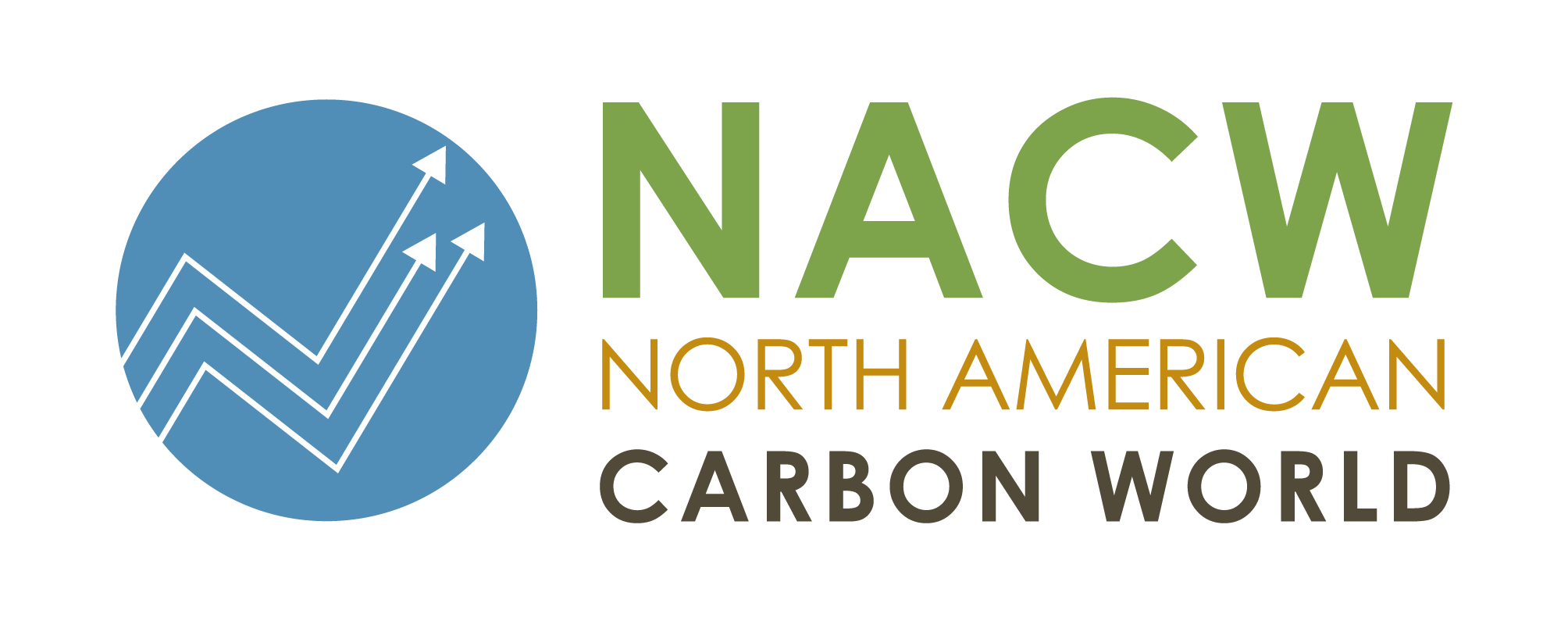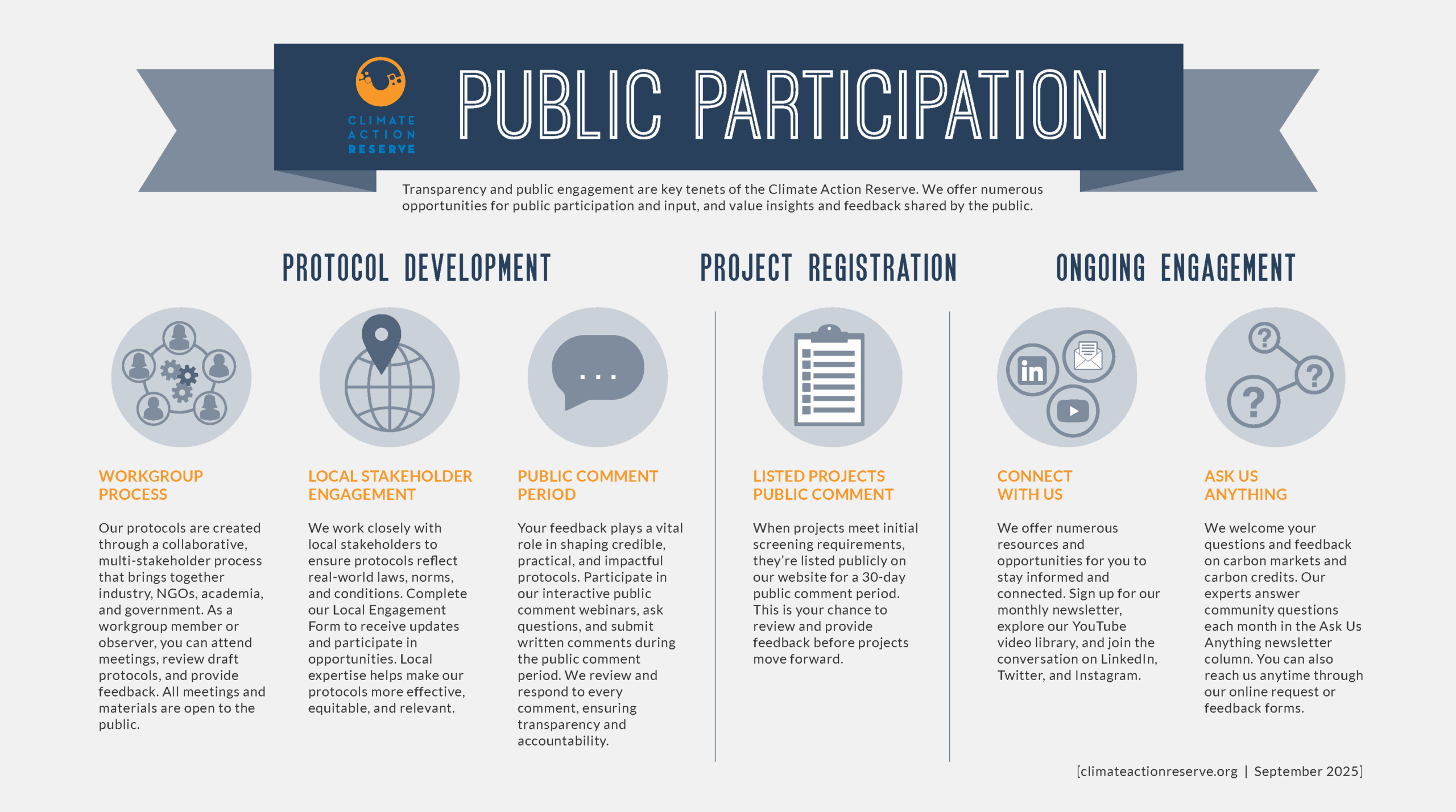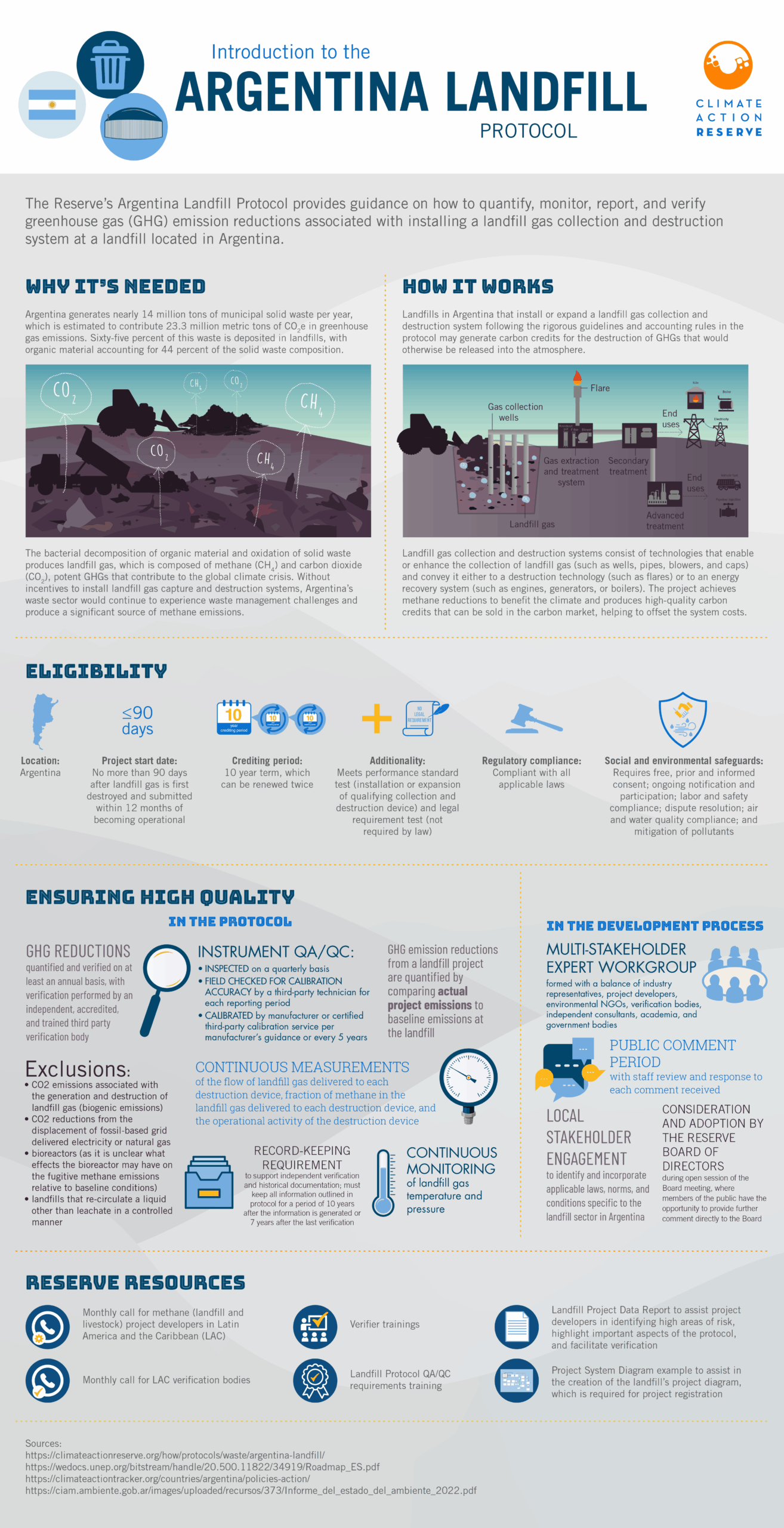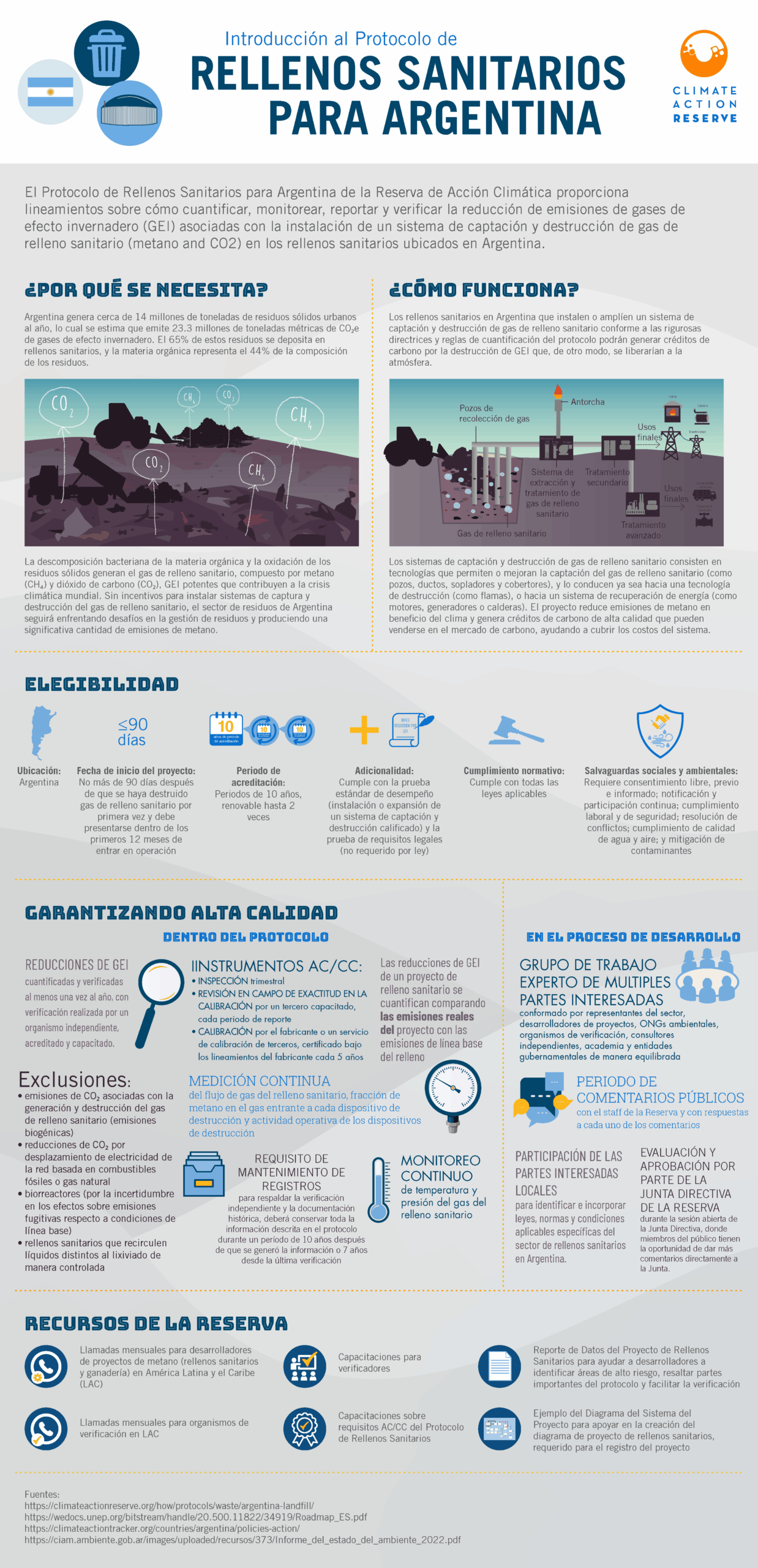Throughout its history, the Reserve has maintained 100 years as the most reputable accounting timeframe for the permanence of sequestration-based credits. The reasoning behind this approach is that early IPCC reports used this timeframe to calculate the Global Warming Potential of greenhouse gases relative to carbon dioxide; issuing credits for carbon sequestered for periods shorter than 100 years could effectively award 100 years’ worth of climate benefits without ensuring they are actually delivered.
The Reserve’s monitoring, reporting, and verification (MRV) requirements and compensation provisions are based on that timeframe. The Reserve also requires contributions to a buffer pool to compensate for credits that carry a risk of future reversal from unavoidable causes. To meet these obligations under the Reserve program, project owners are required to monitor for potential reversals, and to compensate for any reversals from avoidable causes, for 100 years after their last credit is issued. (Exceptions apply when projects use tonne-year accounting or when the end use provides a reasonable level of certainty about the long-term fate of the sequestered GHGs.)
In considering how its carbon crediting protocols should address permanence, the Reserve is motivated by the fundamental imperative of safeguarding environmental integrity while recognizing that the evolving policy context and rapid pace of innovation in this field mean that other ways of addressing permanence, from alternative timeframes for post-issuance monitoring to different tools for monitoring projects and addressing reversals, may be capable of protecting environmental integrity with rigor and transparency.
The Reserve is launching a work program to consider how its carbon crediting protocols should address permanence. Consistent with its collaborative approach, the organization is seeking input from stakeholders via two means. One is thoughts on key questions surrounding permanence. The other is participation in a workgroup to support the work program.
Links:
- Permanence work program paper
- Commentary on the Reserve’s decision to launch the work program
- Public comments webform
- Workgroup webform
Questions may be directed to policy@climateactionreserve.org.
___________
La Reserva lanza programa de trabajo sobre permanencia de los créditos de carbono
A lo largo de su historia, la Reserva ha mantenido 100 años como el horizonte temporal de contabilidad con más reputación para la permanencia de los créditos basados en secuestro de carbono. La razón detrás de este enfoque es que los primeros informes del IPCC utilizaron este periodo para calcular el Potencial de Calentamiento Global de los gases de efecto invernadero en relación con el dióxido de carbono. Emitir créditos por carbono secuestrado durante periodos menores a 100 años podría, en efecto, otorgar beneficios climáticos equivalentes a 100 años sin garantizar que realmente se cumplan.
Los requisitos de monitoreo, reporte y verificación (MRV) y las disposiciones de compensación de la Reserva se basan en ese horizonte temporal. La Reserva también requiere contribuciones a un fondo de aseguramiento (buffer pool) para compensar los créditos que conllevan riesgo de reversión futura por causas inevitables. Para cumplir con estas obligaciones bajo el programa de la Reserva, los dueños de proyectos deben monitorear posibles reversiones y compensar cualquier reversión por causas evitables durante 100 años después de la emisión de su último crédito. (Existen excepciones cuando los proyectos utilizan contabilidad de tonelada-año o cuando el uso final ofrece un nivel razonable de confianza sobre el destino a largo plazo de los GEI secuestrados).
Al considerar cómo deberían abordar la permanencia los protocolos de créditos de carbono, la Reserva está motivada por el imperativo fundamental de proteger la integridad ambiental, reconociendo al mismo tiempo que el contexto normativo en evolución y el rápido ritmo de innovación en este campo implican que otras formas de abordar la permanencia —desde horizontes alternativos de monitoreo posterior a la emisión hasta distintas herramientas para monitorear proyectos y gestionar reversiones— podrían también proteger la integridad ambiental con rigor y transparencia.
La Reserva está lanzando un programa de trabajo para analizar cómo sus protocolos de créditos de carbono deberían abordar la permanencia. En línea con su enfoque colaborativo, la organización busca aportes de las partes interesadas a través de dos vías:
- Opiniones sobre preguntas clave en torno a la permanencia.
- Participación en un grupo de trabajo para apoyar el programa.
Enlaces:
- Documento del programa de trabajo sobre permanencia
- Comentarios sobre la decisión de la Reserva de lanzar el programa
- Formulario web para comentarios públicos
- Formulario web para el grupo de trabajo
Las preguntas pueden dirigirse a: policy@climateactionreserve.org.







